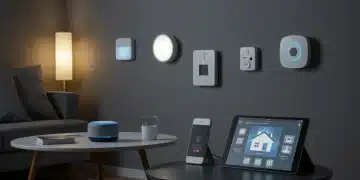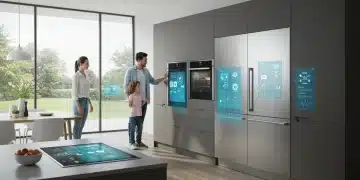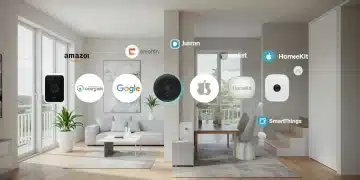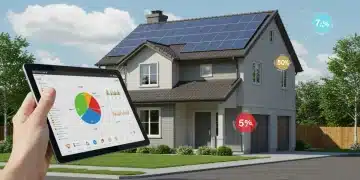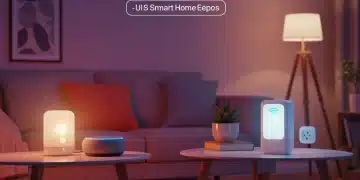Smart Home Troubleshooting: 5 Quick Fixes for US Homeowners
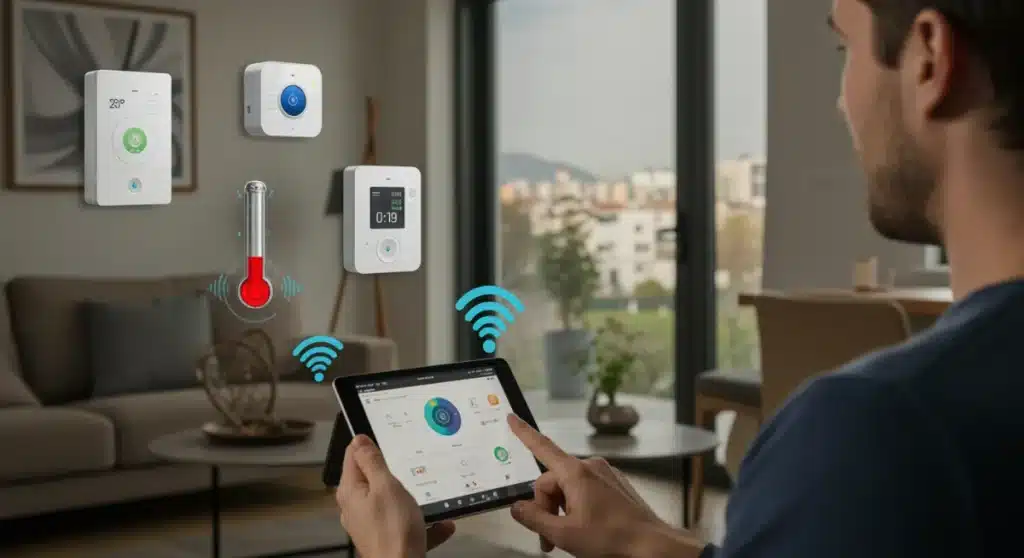
For US homeowners experiencing issues, Troubleshooting Common Smart Home Issues: 5 Quick Fixes for US Homeowners (PRACTICAL SOLUTIONS) addresses prevalent problems like connectivity, device unresponsiveness, and automation failures with actionable, immediate steps.
Troubleshooting Common Smart Home Issues: 5 Quick Fixes for US Homeowners (PRACTICAL SOLUTIONS) is a critical topic as smart homes become increasingly integral to daily life. Many US homeowners encounter frustrating glitches, from unresponsive devices to network drops. This guide delivers immediate, practical solutions to get your smart home back on track.
Addressing Connectivity Dropouts: Router and Wi-Fi Solutions
Connectivity remains the cornerstone of any smart home ecosystem. When devices lose connection, the entire system can falter. Recent reports indicate a surge in complaints regarding intermittent Wi-Fi signals affecting smart devices, particularly in densely populated areas.
Many users overlook the fundamental role of their home network. A weak or overcrowded Wi-Fi signal is often the culprit behind unresponsive smart lights, security cameras, or thermostats. Optimizing your router placement and settings can dramatically improve performance.
Router Placement and Interference
The physical location of your Wi-Fi router significantly impacts signal strength. Placing it centrally, away from large obstructions like concrete walls, metal appliances, and even other electronics, can minimize interference and extend coverage. Signal degradation is a primary reason smart devices struggle to maintain a stable connection, leading to frustrating delays or complete disconnections.
- Central Location: Position your router in the center of your home, ideally on an elevated surface.
- Avoid Obstacles: Keep routers away from microwaves, cordless phones, and large metal objects.
- Minimize Clutter: Ensure the router has clear line-of-sight to most smart devices.
Beyond placement, updating your router’s firmware is a simple yet effective maintenance task. Manufacturers frequently release updates that improve security, enhance performance, and address known bugs. Checking for and applying these updates can resolve underlying connectivity issues that might be silently plaguing your smart home devices.
Resolving Device Unresponsiveness: Power Cycle and Reset Tactics
One of the most common and perplexing issues smart home users face is when a device simply stops responding. Whether it’s a smart plug refusing to turn on or a smart speaker ignoring commands, an unresponsive device can disrupt daily routines. Often, the solution is surprisingly straightforward.
Before delving into complex diagnostics, a simple power cycle can often resolve temporary software glitches. This involves unplugging the device, waiting a few seconds, and then plugging it back in. This action forces the device to reboot its internal software, clearing any minor errors. If a power cycle doesn’t work, a factory reset might be necessary, though this should be considered a last resort as it erases all custom settings.
When to Power Cycle vs. Factory Reset
Understanding when to employ a power cycle versus a factory reset is crucial. A power cycle is ideal for transient issues—a device that’s temporarily frozen or stuck. A factory reset, however, is more appropriate for persistent problems, such as a device that consistently fails to connect or behave as expected, even after multiple power cycles.
- Power Cycle: Use for temporary freezes, minor connectivity hiccups, or occasional command failures.
- Factory Reset: Reserve for chronic unresponsiveness, persistent connection failures, or when selling/repurposing a device.
- Check Documentation: Always consult the device’s manual for specific reset procedures, as they vary by manufacturer.
It is important to remember that performing a factory reset will require you to set up the device again from scratch, re-pairing it with your smart home hub and reconfiguring any automations or preferences. This can be time-consuming, so ensure you’ve exhausted all other troubleshooting steps first.
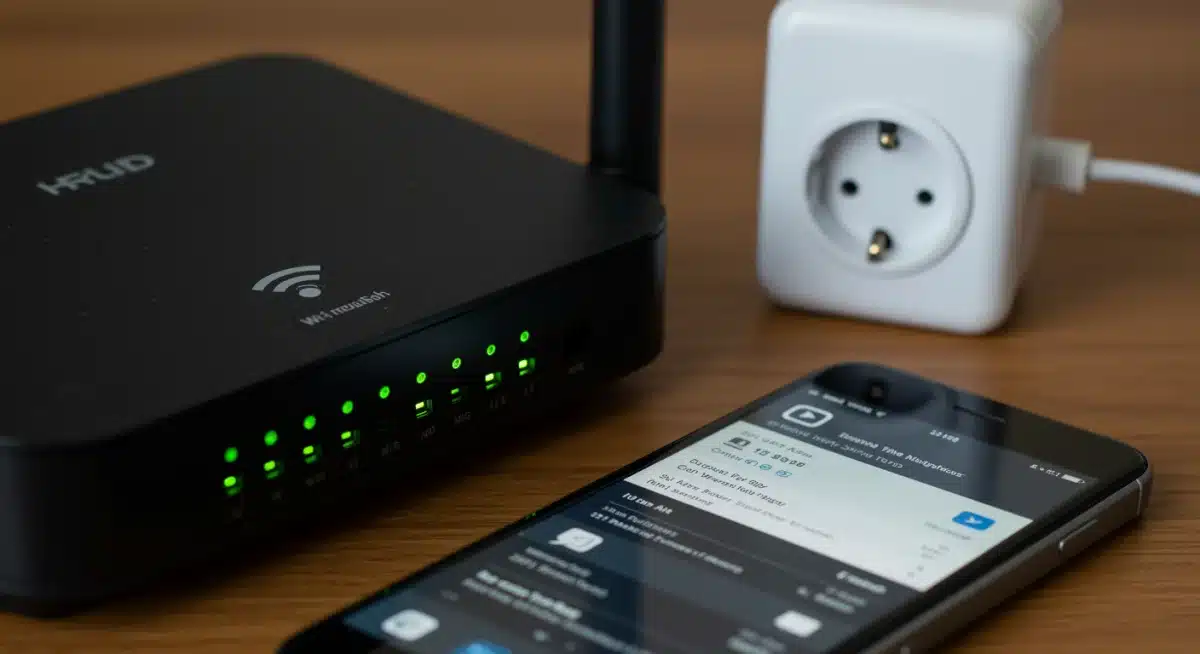
Diagnosing Automation Failures: Rule Checks and App Updates
Smart home automations are designed to simplify life, but when they fail, they can cause significant frustration. An automation failure can range from lights not turning on at sunset to security systems not arming as scheduled. Pinpointing the exact cause requires a systematic approach.
Often, automation issues stem from incorrectly configured rules or outdated application software. Verifying the logic of your automation rules within your smart home app is the first critical step. Ensure all conditions, triggers, and actions are correctly defined and that there are no conflicting rules that might override the intended automation.
Reviewing Automation Logic
Carefully examine each component of your automation. For example, if a light is supposed to turn on when motion is detected, check that the motion sensor is active, the light is powered, and the rule specifies the correct light and trigger. Small errors in logic or device selection can lead to complete automation failure.
- Verify Triggers: Confirm the conditions that initiate the automation are met (e.g., time, motion, sensor status).
- Check Actions: Ensure the actions specified are correct and target the right devices.
- Identify Conflicts: Look for overlapping or contradictory automations that might be interfering.
Another common oversight is neglecting app updates. Smart home app developers frequently release updates to fix bugs, improve compatibility, and add new features. An outdated app might have compatibility issues with newer device firmware or operating system updates, leading to automation glitches. Regularly checking for and installing app updates can often resolve these subtle but impactful problems.
Addressing Voice Command Problems: Microphone and Assistant Checks
Voice assistants like Amazon Alexa, Google Assistant, and Apple Siri are central to many smart home experiences. When voice commands fail, it can feel like your smart home has lost its ability to understand you. This issue can range from the assistant not hearing you to misinterpreting your instructions.
The primary culprits behind voice command problems are usually related to microphone sensitivity, environmental noise, or issues with the voice assistant’s cloud service. Begin by ensuring your smart speaker’s microphone is not obstructed and that it’s clean. Dust and debris can significantly impair microphone performance.
Optimizing Voice Assistant Performance
Beyond physical obstructions, the acoustic environment plays a significant role. Excessive background noise, such as a blaring TV or multiple people talking, can make it difficult for your voice assistant to accurately pick up your commands. Try issuing commands in a quieter setting to see if the problem persists.
- Microphone Check: Ensure no physical obstructions block the microphone on your smart speaker.
- Reduce Noise: Minimize background noise when issuing commands.
- Retrain Voice Model: Many voice assistants offer an option to retrain your voice model, improving recognition.
If the issue isn’t environmental, consider checking the status of the voice assistant’s cloud service. Outages, though rare, can prevent commands from being processed. A quick search for ‘Alexa status’ or ‘Google Assistant outage’ can confirm if there’s a broader issue. If the service is operational, try restarting your smart speaker or re-linking your smart home accounts within the assistant’s app.
Managing Battery and Power Issues: Monitoring and Replacement
Many smart home devices, particularly sensors, remote controls, and some security components, rely on batteries. Overlooking battery life is a frequent cause of device malfunction and unexpected outages. A device that suddenly stops working or becomes unreliable might simply be running on a low or dead battery.
Regularly monitoring the battery status of your smart devices is a crucial maintenance step that can prevent many headaches. Most smart home apps provide a battery level indicator for connected devices. Establishing a routine to check these levels, perhaps monthly, can help you proactively replace batteries before they cause a disruption.
Proactive Battery Management
For devices that are hardwired or use rechargeable batteries, power issues can still arise. Ensure power cables are securely connected and that outlets are functional. For rechargeable devices, confirm they are charging correctly and that the charging ports are free of debris. Using the correct type and quality of batteries is also vital, as cheap or incompatible batteries can lead to suboptimal performance or even damage.
- Monitor App Indicators: Regularly check battery status within your smart home app.
- Scheduled Replacements: Replace batteries proactively based on manufacturer recommendations or observed lifespan.
- Check Power Connections: For wired devices, ensure secure connections and functional power sources.
When replacing batteries, always use fresh, high-quality batteries of the specified type. Keep a small stock of common battery sizes on hand for quick replacements. For devices with rechargeable batteries, consider having a spare charging cable or ensuring the primary one is easily accessible to minimize downtime.
Securing Your Smart Home: Software Updates and Network Security
While convenience is a major draw for smart home technology, security is paramount. Unsecured smart devices can be vulnerable entry points for cyber threats, compromising personal data and home safety. Recent cyberattacks targeting IoT devices underscore the urgency of maintaining robust security practices.
The first line of defense is ensuring all your smart devices and your smart home hub or bridge have the latest software or firmware updates installed. Manufacturers frequently release these updates to patch security vulnerabilities and improve device resilience against emerging threats. Enabling automatic updates whenever possible can help maintain continuous protection without constant manual intervention.
Strong Passwords and Network Encryption
Beyond device updates, your home network’s security is critical. Using strong, unique passwords for your Wi-Fi network and all smart device accounts is non-negotiable. Avoid default passwords, which are easily guessable. Implementing WPA3 encryption on your Wi-Fi router, if supported, provides a higher level of security than older WPA2 standards.
- Enable Auto-Updates: Set smart devices and apps to update automatically for continuous security patches.
- Strong Passwords: Use complex, unique passwords for Wi-Fi and all smart home accounts.
- Network Segmentation: Consider creating a separate guest network for smart devices to isolate them from your main network.
Furthermore, regularly reviewing the privacy settings of your smart devices and associated apps is important. Understand what data your devices are collecting and how it’s being used. Disabling unnecessary data collection features can enhance your privacy posture. A robust smart home security strategy involves a combination of vigilant software management, strong authentication, and informed privacy choices.
| Key Issue | Quick Fix |
|---|---|
| Connectivity Dropouts | Optimize router placement, update firmware. |
| Device Unresponsiveness | Perform a power cycle or factory reset as needed. |
| Automation Failures | Review rule logic, update smart home apps. |
| Voice Command Issues | Check microphone, reduce noise, retrain voice model. |
Frequently Asked Questions About Smart Home Troubleshooting
Frequent disconnections often stem from poor Wi-Fi signal strength, router interference, or outdated firmware. Try repositioning your router, ensuring it’s centrally located and away from obstructions, and always keep your router’s firmware updated to the latest version for optimal performance and stability.
First, attempt a power cycle by unplugging the device for 10-15 seconds and then plugging it back in. If the issue persists, a factory reset might be necessary, but be aware this will erase all settings, requiring you to set up the device again from scratch within your smart home app.
Automation failures often result from incorrect rule logic or outdated smart home apps. Review your automation rules carefully in your app to ensure all conditions and actions are correctly defined. Also, check for and install any available updates for your smart home control app.
Voice command issues can be due to a blocked microphone, excessive background noise, or a need to retrain your voice model. Ensure no obstructions are near the microphone and try giving commands in a quieter environment. Many assistants offer a voice retraining option in their settings.
Enhance smart home security by regularly updating device firmware and apps, using strong and unique passwords for all accounts and your Wi-Fi network, and enabling WPA3 encryption if your router supports it. Also, consider reviewing device privacy settings to control data collection.
Looking Ahead
As smart home technology continues its rapid evolution, the landscape of common issues and their solutions will also shift. US homeowners can expect increasing integration of AI-driven diagnostics into smart home ecosystems, potentially allowing devices to self-diagnose and even self-correct minor glitches. The focus will progressively move towards predictive maintenance and more seamless, secure interoperability across different platforms. Staying informed about these advancements and maintaining proactive troubleshooting habits will remain key to a truly smart and worry-free home experience.
